Long after the fuss over Pope Leo XIV, the village of Dolton will still be here
Published in Religious News
DOLTON, Ill. -- The village of Dolton, which is where you may find yourself if you’re traveling south through Chicago and run out of Chicago to travel through, which we have heard more about in the past 30 days or so than since it was established 130-odd years ago, which is now best known to the world as the hometown of Pope Leo XIV, is like a lot of Midwestern places. Or a lot of the blink-and-you-miss-it boondocks, backwaters and wherevers other popes have come from.
You never give it a second thought, until you do.
And so, before our attention swings forever more to the Vatican, know this:
Dolton, whether or not you ever think about it again, is full of kindness and hope. But interesting. It’s a pocket-sized village (4.6 square miles, with a population that peaked at around 26,000 in 1970 and has drifted off ever since). It’s on the banks of muddy Little Calumet River and modest Lake Cottage Grove, though it feels far from anything damp. The town water tower always seems like it could use a fresh coat of paint. Railroad tracks shoot here and there, all over the place. It’s been working class since European settlers (Germans, Dutch) arrived in the 1800s. But after industry faded away generations ago, the future never trended brighter. Dolton kept hoping. Its new wish for a burst of pope-related tourism resonates with another moment in its history 130-odd years ago, when Dolton so hotly anticipated a boom of new residents and tourists to emerge from the success out of Chicago’s Columbian Exposition of 1893, Dolton civic leaders decided to get incorporated.
That boom landed with a wet pop.
Neighboring South Holland began touting itself as the fancy and inviting Onion Capital of the World; meanwhile Dolton became home to a large sauerkraut factory and several nondescript industrial warehouses that churned out canned beets, lima beans, baking equipment, castings and barrels.
See, until a few weeks ago— May 8, to be precise — there wasn’t a lot of there there.
If you’re planning a pilgrimage to the pope’s hometown this summer, keep that in mind: Dolton was never a remarkable place, and never asked to be considered remarkable.
Except, in its own way, it is.
Just like wherever it is you came from.
Dolton has good history and bad history, and lawns, stores, squirrels, parks, good people, bad people, boring people, people with too much to say, people with nothing to say. It’s seen plenty of characters: The grandma in the 1800s who would drag her rocking chair out to new railroad construction sites and knit all day, hoping to block yet another soot-spewing steam engine from lumbering into town. The mayor (Ira Hastings) who served from 1935 to 1957, having found his calling after knocking around minor-league baseball — a stint so bad, he played on 12 different teams in only four years and retired with exactly zero home runs and zero RBIs. More ominously, there was that friendly guy down at the local trophy shop (Trophys Are Us), the one who turned out to be a serial killer (David Maust). And that Marine radio operator who was in Desert Storm, who also turned out to be a serial killer (Andrew Urdiales).
There was the Dolton man whom everyone called Motorcycle Mike though it was a misnomer: Mike, an associate of Al Capone’s, was known for stealing cars, so many around the Midwest that when he was finally caught at 82-years old, he became the oldest car thief in Minnesota history.
Jimmy Carter once held a town hall meeting in Dolton. And Gene Hackman shot a single scene in Dolton for a movie you never saw (“The Package”). Dennis DeYoung lived with his parents in Dolton, just as he began to play rock music with a few friends who later called themselves Styx.
That said, other than, again, you know, the pope, the second most remarkable thing to happen in Dolton was a demographic shift driven by the decline of factory work and textbook white flight. Which was not that remarkable for Illinois, either. In 1980, there were only 490 Black residents in Dolton; by the 1990s, there were more than 14,000. Today, Dolton is around 90% Black.
Dolton may look different now than it did when it was a blue-collar postwar suburb, but it’s not really all that different. You can still count the stoplights on a few dozen fingers. No one over at Kandy Kane Park (including Park District officials) can tell you why it’s Kandy Kane. The village hall is no larger than a small bank branch; and inside is like a DMV on a slow morning. Official village vehicles are so tiny, a resident described them to me as “clown cars.” So no, it’s not Mayberry. Midwest snark comes factory-installed, as do caveats: Dolton’s fine, you hear. A family place. A quiet place. That’s why people move here. One morning at Olivia’s, where everyone stops for pancakes, a Jamaican retiree showed off photos of grandkids to a retiree who drove a truck for years. They didn’t know each other until that day; before saying goodbye, they made dinner plans.
If it all sounds too idyllic to be true all the time, yes, it is, and so what?
Even the locals who never wanted to live anywhere but Dolton will quickly add, sure, they live among the faded lettering and tattered awnings of far too many shuttered storefronts, businesses that, decades ago, seemed promising to someone. Yes, they say with a self-deprecating chuckle, there’s still no there there in Dolton. But there are thoughtful people who, long before a pope came out of their ranks, were already doing onto others as they would have done onto themselves.
The first resident I approached was mowing his lawn — except, I learned, it was actually the lawn of an aging neighbor who lives on a fixed income and needed a hand. The man with the mower, Jacques Lamarre, 70, semi-retired, had the time, so … He says it self-consciously. He’s not looking to become a pope or a saint or anything. He speaks with the musical French timbre of his native Haiti. He’s lived in Dolton since the 1970s. He talks long and wittily, it’s as if he had been waiting for someone to ask him why he lives on this block, in this neighborhood, in this town, in this state.
He smiles and says: It’s a place of “two faces.”
North side is rough, west side is easy. “But that’s also relative,” he adds generously. He raised three kids here, all of whom moved away as they got older. His neighbors, also elderly. South Holland, a stone’s throw away, is “upper grade,” but he prefers here. “We get Fourth of July fireworks. And we have a lot of churches. Do something you shouldn’t, you don’t go far to tell someone you feel bad!”
Indeed, down at the end of the street, at Faith United Methodist, there’s a wide wall with a sun-washed sign that seems to beg: “NO BALL PLAYING.” You can tell, ages ago, this was the perfect wall for hitting a ball against, but whatever concrete existed beneath it is now overgrown grass.
Just the other day, one of Katrina Cotton’s neighbors called her at work. They were worried because it appeared someone suspicious was creeping around Cotton’s backyard. After a few worried moments, it dawned on Cotton: Oh, wait, that’s just the termite man, spraying.
“I love Dolton,” she said, “it’s my hometown, people look out for one another. I know everyone. I know the person who lives in that house.” She points across a park. “And that house. It’s cozy. The kind of place where, from where I am standing, I know if I cross two train tracks there, I’m in Chicago.”
It’s the kind of place where the landmarks on your personal map are the same as everyone else’s. To reach, say, the Free-N-Deed Market downtown, near the village hall: Pass the basketball court, continue by that long parking lot nobody parks in, pass the brown and tan houses that look like brown and tan houses, the apartment complex that could be anywhere, and when you get to the building that used to be New Zion church, by the closed obstetrics office, turn left — there you are.
You’ll find Nicole Scott, who founded the Free-N-Deed food pantry, as well as, next door, Tabitha’s Closet-N-Thrift, which is named for the Biblical Tabitha, also known as Dorcas, also known as a compassionate soul who helped widows. A long note in the window explains all of this and much more. Sales go to the American Association of Single Parents, which Scott founded. Scott created all of this. But she doesn’t like to acknowledge that. “Because God does it all, in my book.”
She’s short and imposing and sizes you up and keeps moving.
You are taking her time but she doesn’t want to brush you off, she’s not rude. She’s building a soup kitchen in an adjoining space; she’s calling it Elijah’s Cafe. Beside that, an emergency shelter; she’s calling it Jacob’s House. She’s been repurposing an entire strip mall, with Free-N-Deed as the anchor, mainly for Dolton residents who could use help. Many do: About 20% of residents live below the poverty line; unemployment is roughly double the state rate.
Scott whispers it’s been great working with Jason House, the new mayor of Dolton, but the last few years were a trial. She says nothing more. She’s discreet. Her eyes search your face and tell you what you already know: The previous mayor, Tiffany Henyard, voted out last winter beneath a cloud of financial probes and federal investigations, had a nickname: “Worst mayor in America.” Scott smiles tightly.
The two things you’re never supposed to talk about, politics and religion, have become the only two things that anyone wants to talk about when it comes to Dolton, Illinois.
At one time, it was just land.
As late as the 1960s, much of that dirt held on to an endemic smell of onion fields. Its first residents were Potawatomi and Winnebago. Eventually the town was named for the Dolton Family, who traveled here from Ohio in a carriage pulled by oxen. They settled on this land for reasons many people still settle here: They found Chicago expensive and crowded. Dolton suggested opportunity, and indeed, the railroads arrived quickly, then the corporations. Industry was good to Dolton for decades. The soil made for perfect bricks. The rivers were ideal for shipping. Plus, Chicago was right there. US Steel, as well as other factories, brought in solid, middle-class factory jobs, and the railroads attracted employees from Pullman who eventually stayed. Residents around the Southland began referring to Dolton as “Dolton Station,” a place so crisscrossed with rail lines that children headed to school could be spotted sitting crosslegged by the tracks, doing homework as they waited, blocked again by slow-moving trains inching past.
Dolton, for a while, turned into the archetype of the 20th century blue-collar Midwest, modest union work, affordable bungalows. The first movie theater in the south suburbs was built here. Churches, in particular, proliferated, as well as the kinds of churchgoers who lecture on street corners about the evils of drinking and dancing (while being known to go out drinking themselves every night).
After 1970, Dolton became another kind of Midwest example.
Corporate globalization, slowly snowballing, closing its factories, taking jobs. The property tax base evaporated, and real estate speculators bought homes from deserters. More of Dolton now rented. By the 1980s, residents were putting signs in their windows urging neighbors to stay.
The first Black residents came from Chicago for affordable housing, better schools, more quiet and less crime. Many others arrived from the South. Cotton’s parents moved here from Alabama, partly because, like the Europeans who had come here a century earlier, rural life agreed with them.
James Stewart, partly retired, sat in his driveway the other day watching a neighbor curl his body around a lawn mower, fine-tuning its innards, picking at clumps of fresh grass. For years, he built sidewalks here, he said. He was a cement mason. He moved to Dolton 30 years ago, from Englewood, to avoid gang violence. Before that, he was in Holly Springs, Mississippi, home of Ida B. Wells, the sort of place you can get on a horse and ride for miles. He lived on a 3,800-acre plantation; he calls himself one of the last sharecroppers. He longed for that quiet. He’s so entrenched here now, he figures he could be mayor himself. He holds no illusions and suffers no doubters: “Dolton is up, down, good days, bad days, like anywhere these days.”
New Dolton may have come for many of the reasons as old Dolton but by the 1990s, the land was no longer firm. Warehouse jobs were replacing factory jobs. Residents became familiar with the hollow optimism of “redevelopment” and “enterprise zones.” It’s hard to hear when the house next door leans so improbably to one side you don’t know what’s holding it up. Against a closed government office there’s a painted sign boasting of Dolton as a “certified city,” a reference to a state development plan from 1983. In 2025, it comes across like a reassurance that Dolton still exists.
Except hope is as easy to spot as decline.
The way bungalow owners emerge on a bright morning to weed whack away a burst of dandelions. The way the library lines its shelves with books about spring and renewal and optimism. The way Wilma’s Famous BBQ still sells its beloved Obama Juice — lemonade, tea and raw honey — in those small plastic jugs you used to see in the ‘70s. Hope here can look as modest as the sign at Dolton Bowl promising “freshly oiled” lanes every day. I knocked on the door of a home that — considering this is the pope’s hometown — has an unfortunate street number: 666. No one answered. That’s a win. Sometimes you take hope where you can find it.
I asked Nakita Cloud, the village spokesperson, about Lake Cottage Grove — one of the few sites of natural beauty here. It’s controlled by a “privately owned fishing club” named the Piscateers, who keep Dolton out using chainlink fence; that arrangement, once disputed by the village, upheld by state courts, began in the 1940s. She said the Piscateers, in fact, recently invited Dolton trustees for a barbecue and, though nothing will change about the lake, she found them “hospitable.”
That’s what progress can look like.
Cloud grew up in Chicago, but she pictured Dolton as “the goal,” the quiet suburb to retreat one day. “There was a period of riff-raff, I won’t lie,” she said, “but crime’s down. A better future is not far.” Dolton hadn’t marched in any local parade in years, but on Memorial Day, when village staff carried a banner in a South Holland parade, strangers from neighboring communities stepped off the sidewalks and met them spontaneously in the street, hugging them, urging them to keep going.
Hold that image tight.
Because, surprised as everyone was that a new pope came from Dolton, again, this is exactly the kind of place where popes come from, where miracles get reported and saints grow up. Working class, ramshackle, tight knit, borderline rural, hoping against hope. Remember that the next time someone tells you this new pope is from Chicago. He’s not — not really. He’s from Dolton, a small place where nothing interesting has ever happened and the primary export these days is decency.
©2025 Chicago Tribune. Visit at chicagotribune.com. Distributed by Tribune Content Agency, LLC.
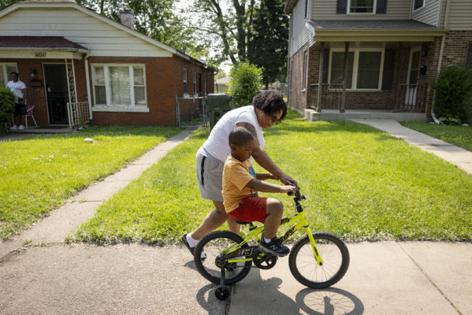
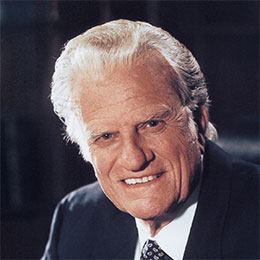
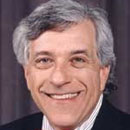
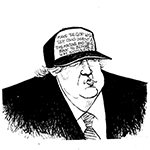




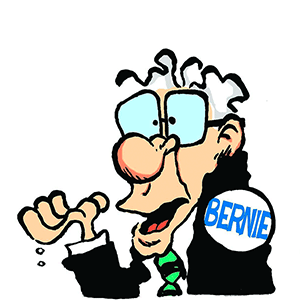
Comments